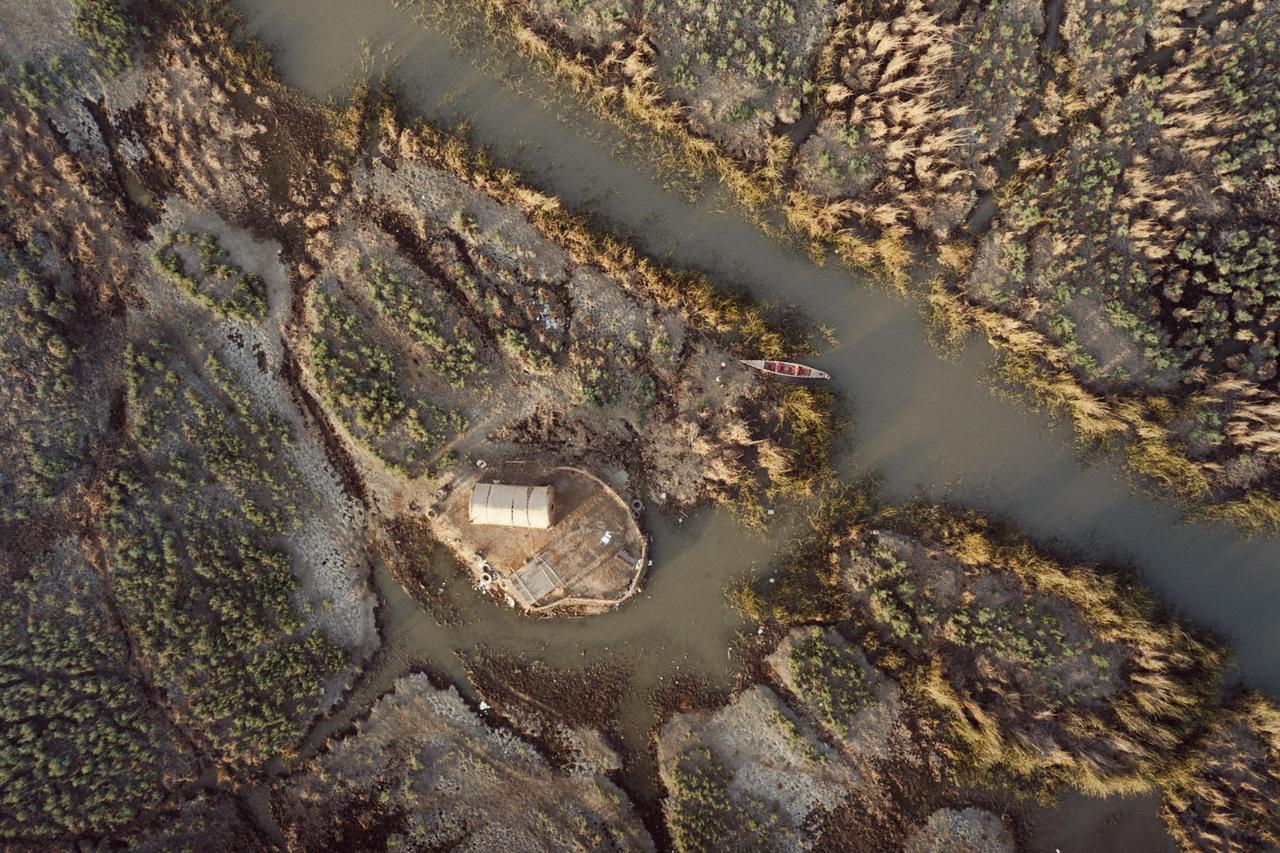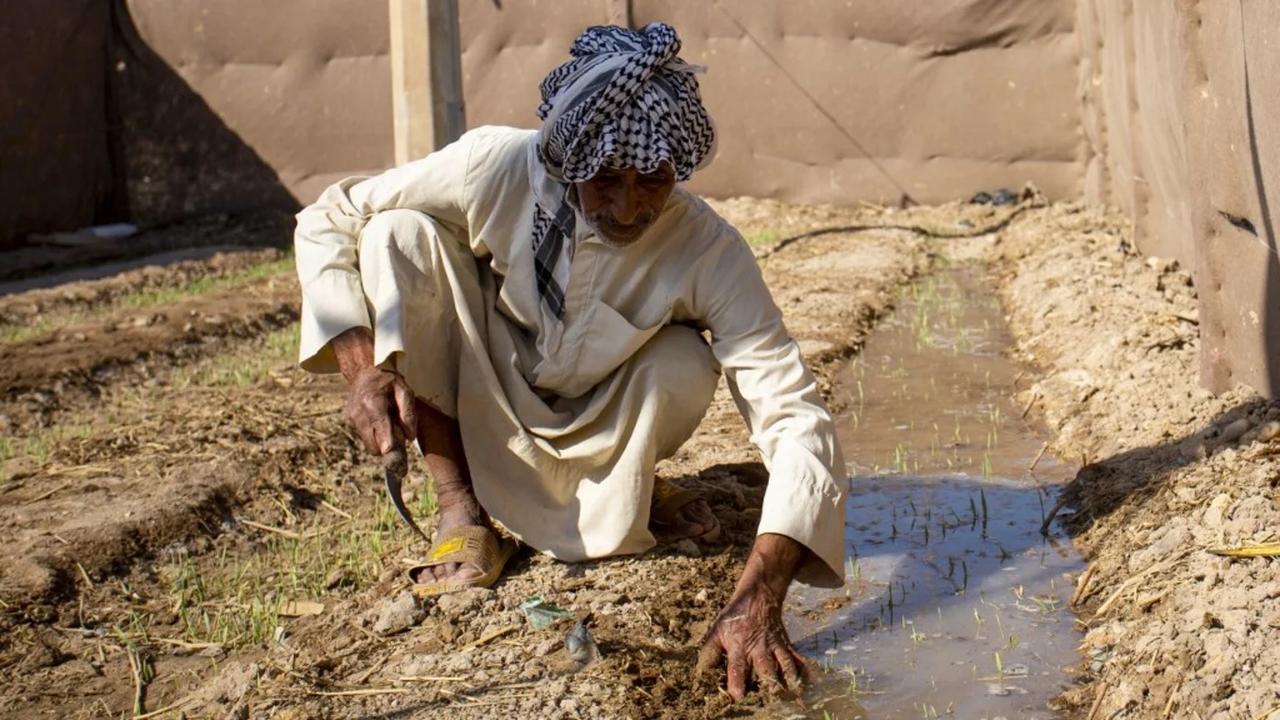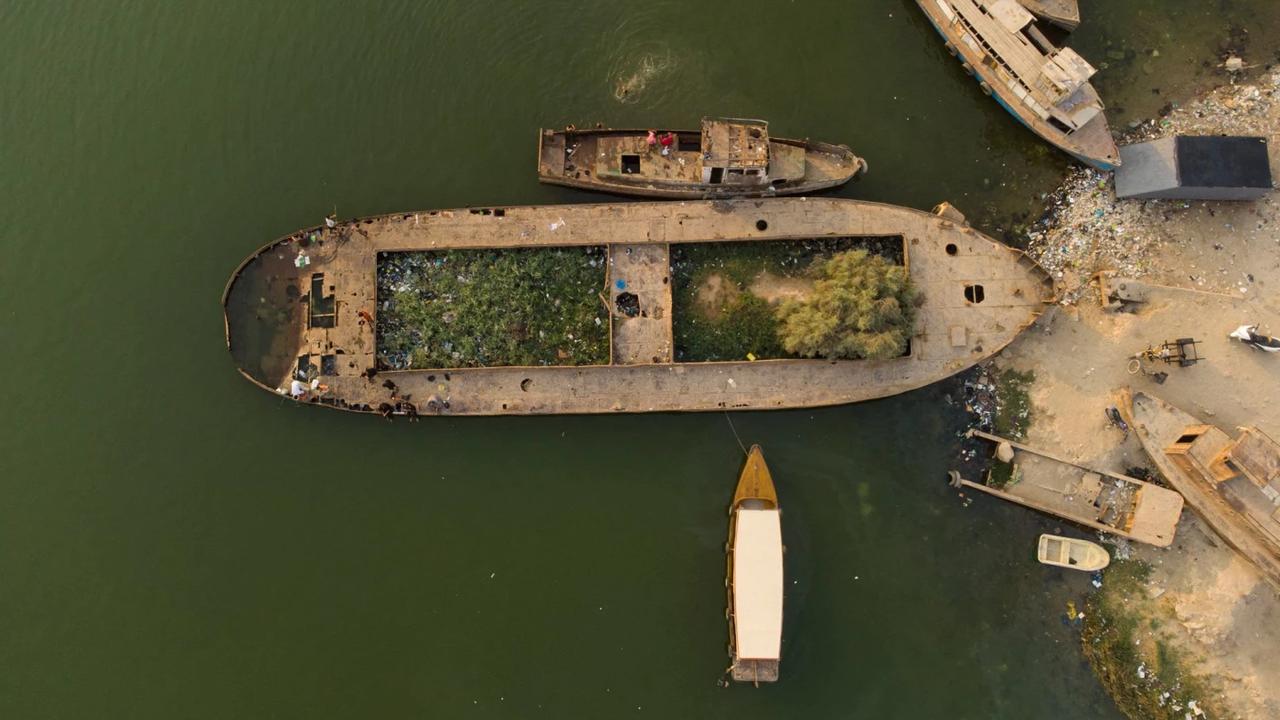
Iraq's oil-rich Basra stands as a pivotal port city in southern Iraq, strategically positioned at the head of the Shatt al-Arab waterway. This unique geographical location has historically established it as a vital center for trade, cultural exchange, and military activity, effectively connecting land and sea routes across the region. Yet, climate change is threatening life in the city more than ever, with some experts warning that drastic climate conditions can make the city unlivable in the coming decades.
During the Islamic Golden Age, Basra flourished as a renowned hub for scholars, poets and traders, making significant contributions to advancements in science and literature, and serving as an essential link along the ancient Silk Road. In contemporary times, Basra's economy is profoundly shaped by its extensive oil reserves, making it one of Iraq’s most economically important cities.
Despite its deep historical roots and ongoing economic significance, Basra is now confronting a severe environmental crisis marked by extreme heat, dangerously high water salinity, and extensive agricultural collapse. The city has been identified as being particularly vulnerable to the impacts of climate change.
Basra's unique geographical placement in southeastern Iraq, at the confluence of the Tigris and Euphrates rivers, which converge to form the Shatt al-Arab waterway, defines its hydrological fate.
As Iraq's furthest downstream governorate, Basra is critically dependent on and highly susceptible to any changes in water flow or quality upstream. This includes not only climate-induced reductions in rainfall and increased evaporation but also the direct impacts of damming and diversion projects undertaken by riparian states such as Türkiye, Syria and Iran.
The cumulative effect of these upstream actions, compounded by reduced freshwater inputs, significantly amplifies the problem of saltwater intrusion from the Persian Gulf. This makes Basra's water crisis a direct consequence of transboundary water politics and resource competition.
Basra's climate is also inherently subtropical, characterized by hot and dry conditions. Summers are very long, sweltering, dry and typically clear, extending for over four months, from approximately May 22 to Sept. 25.
During this period, average daily high temperatures consistently exceed 40.5 degrees Celsius (105 degrees Fahrenheit). July stands out as the hottest month, with an average high of 46.1 degrees Celsius, and throughout the year, temperatures rarely drop below 2.2 degrees Celsius or exceed 49.4 degrees Celsius.
Historically, Basra has always been characterized by a "subtropical, hot, and dry climate" with naturally sweltering summers. However, the current crisis is intensifying these pre-existing conditions.
This suggests a critical tipping point has been reached where a naturally harsh, yet historically livable, climate is becoming fundamentally unlivable due to the accelerating effects of human-induced climate change. This transition from "harsh but livable" to "potentially unlivable" vividly demonstrates the non-linear and accelerating nature of climate change impacts.

Basra is experiencing increasingly severe heat waves, with temperatures recently soaring past 53 degrees Celsius, particularly near oil fields, which act as localized "heat centers" and further accelerate climate change effects. These extreme conditions are no longer rare but have become a regular occurrence.
Basra also faces a profound and deepening water crisis, characterized by significantly reduced river flows from the Tigris and Euphrates and dramatically declining groundwater levels. Iraq's mean annual rainfall is projected to decrease by 9% by 2050, further exacerbating the water deficit.
Salinity levels in the Shatt al-Arab have reached alarming concentrations, exceeding 30,000 total dissolved solids (TDS), which is approximately half the saltiness of seawater. This severe saltwater intrusion from the Persian Gulf is intensified by climate change and the dwindling freshwater flow of the Shatt al-Arab River.
The city is now experiencing over 100 dusty days each year, a dramatic increase attributed to widespread desertification, the loss of vital green areas, and shifts in seasonal wind patterns. Iraq recorded over 200 dusty days in 2022, more than double the annual average observed in the 1980s and 1990s, indicating a sharp upward trend.
Desertification is a pervasive issue affecting Iraq’s land area, with 92% of the population being affected by or vulnerable to its consequences. In Basra province, thousands of hectares of once-productive farmland have been consumed by desertification. The causes are multi-faceted, including climate change, destructive military operations, unsustainable overgrazing, and severe shortcomings in water governance.

International organizations have consistently highlighted the dire climate situation in Iraq, with particular emphasis on Basra. UNICEF and the U.N. Global Environment Outlook (GEO-6) rank Iraq 61st out of 163 countries on UNICEF's Children's Climate Risk Index and identify it as the fifth most vulnerable country globally to water and food shortages and extreme temperatures.
The International Energy Agency (IEA) corroborates Iraq's rapid warming rate of 0.48 degrees Celsius per decade, which significantly exceeds the global average. The IEA projects future temperature increases of 2.5 degrees Celsius in a low-emissions scenario and a devastating 5.6 degrees Celsius in a high-emissions scenario by the end of the century.
Iraq's high ranking on global vulnerability indices is not merely an academic statistic. These abstract numbers translate directly into tangible, devastating local impacts in Basra. This manifests as an overwhelming demand for humanitarian aid, with Iraqi Red Crescent stations being overwhelmed, and widespread public health crises, including thousands hospitalized for water poisoning and respiratory issues.
Local and academic observations further reinforce the severity of Basra's climate crisis. On the ground, the Iraqi Red Crescent Society's 16 reverse osmosis (RO) water desalination stations in Basra are witnessing a sharp surge in demand, currently providing potable water to over 60,000 desperate residents as the quality of municipal water deteriorates.
First-hand accounts from farmers in Zubair, a key farming area for Basra, paint a grim picture. Farmer Mohammed Sanker reported that "burning winds, salty water, and lack of rain destroyed the crops and burned plastic greenhouses." This led to over 3,000 farms being hit in a single season, incurring substantial financial losses.
Future climate scenarios for Basra and Iraq as a whole paint an even more alarming picture. Climate models from the Intergovernmental Panel on Climate Change (IPCC) project Iraq's land surface temperature to increase by 2.8 degrees Celsius in a low-emissions scenario and by a more severe 5.6 degrees Celsius in a high-emissions scenario by the end of the century compared to pre-industrial levels.
The current situation in Basra is largely characterized by reactive responses, with humanitarian aid organizations like the Red Crescent struggling to meet overwhelming demand and public protests erupting in response to failing services. The projections for Basra's future indicate a trajectory where conditions could become fundamentally "unbearable" for people to live in.
This highlights that the current approach of merely managing symptoms can be considered insufficient. Experts note that a fundamental shift towards proactive, long-term adaptation strategies is critically needed to prevent irreversible decline in Basra.
Addressing Basra's crisis demands a holistic and integrated approach that transcends traditional sectoral boundaries.
This includes urgent investments in sustainable water management, advanced desalination technologies, and resilient agricultural practices.